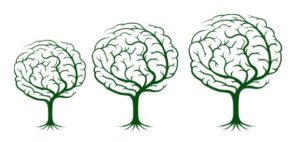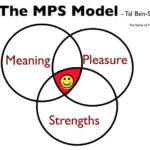Happiness Hacks – simple positive psychology exercises for teachers and students.

Marc Helgesen (Japan) shares happiness hacks based on the science of positive psychology

There are many short, simple activities we can do to make ourselves and others happier. Dr. Laurie Santos of Yale University and The Happiness Lab blog refers to them as “happiness hacks.” What follows are happiness hacks. Most you can do either for yourself or with your students, or both. The first are silent. Most you can do privately, even if you are in public. The second set you may want to do out loud. Many you are likely to want to share with your students. Enjoy.
LINKS: Happiness blog link: https://www.happinesslab.fm/
Happiness hacks link: https://www.youtube.com/watch?v=4gwi-rzSwlQ
Silent happiness hacks
(Those with links have a variation you might want to do with students).
Time confetti (Explained at 14:45 in the linked podcast) Yale’s Laurie Santos  says we actually have more free time than we did 10 years ago. It is just broken into tiny bits. We often don’t use it. Make a list of good things you could do in those 3- to 15-minutes chunks of free time (remember you are trying to be happier, not necessarily more productive). Make your list. Then, when you have free time (10 minutes until your next ZOOM?) do one. Starter list:
says we actually have more free time than we did 10 years ago. It is just broken into tiny bits. We often don’t use it. Make a list of good things you could do in those 3- to 15-minutes chunks of free time (remember you are trying to be happier, not necessarily more productive). Make your list. Then, when you have free time (10 minutes until your next ZOOM?) do one. Starter list:
- Go for a short walk outside
- 3-minute meditation
- Ice cream on a hot day
- Massage your eyes / head
- Stretch
- Quick exercises (burpees, jumping jacks, etc.) while students are in breakout rooms
Notice nature walks. Take a slow walk outside. Notice nature. Even if you are in a big city, there are probably elements of nature: the breeze rustling leaves in the trees. Leaves crunching under your feet. The sounds of birds. See how much you can notice. In the spring, try walking somewhere where you can smell flowers, etc.
 Just smile. Sit somewhere private. Close your eyes. Make a big smile on your face. The smile is likely to trigger positive neurotransmitters. Notice how the feeling builds.
Just smile. Sit somewhere private. Close your eyes. Make a big smile on your face. The smile is likely to trigger positive neurotransmitters. Notice how the feeling builds.
Spreading and catching smiles. In some public place, smile at strangers. Many will smile back. We naturally reflect smiles. Of course, if someone doesn’t smile back right away, look at someone else. You don’t want to come off in an inappropriate way.
Breathing 6-5-4. Breathing is one of the quickest ways to work with the mind/body connection. A basic concept is to breathe out through the mouth and breathe in through the nose. This is because the mouth is bigger than the nostrils. You want to expel as much old air as possible. A good way is to breathe in for the count of six, hold your breath for the count of five, breathe out for the count of four, then hold again for the count of five. Repeat several times. The important thing is not the specific count, it is the ratio. You can raise or lower the numbers to match what feels good to you. If you aren’t used to doing yoga breathing, you might feel a bit dizzy. I teach my students this for settling their nerves before something stressful like presentations, big tests or job interviews. You can do it privately in pubic.
Walking meditation (fast) (breathing). You easily can combine Breathing 6-5-4 with a walking meditation. Go of a walk at a fairly relaxed pace. Use your breathing and steps to match you 6-5-4 pattern as in Breathing 6-5-4. Note, this is a walking meditation but your eyes are open.

Walking meditation (slow). This time your eyes are closed. You need an open space, like a gym or big hall that isn’t being used at the time. You need a lane of about 5-8 meters that doesn’t have chairs or other things to trip over. Stand and close your eyes. Breathe deeply a few times Very, very slowly, lift your right foot. Move it forward about half the length of your foot. As you do, notice the muscles in your foot and leg. Set your foot down. Shift your weight from your left. Notice every muscle move. Slowly repeat the pattern: lift, forward, step down, shift. Repeat the pattern until you have gone several meters forward. If time permits, turn around and slowly return to your starting point.
Eating with mindfulness. Get a piece of fruit or chocolate. You are going to eat it as slowly as possible, using all the senses. Start by looking at it. If it is fruit, notice what is different about this piece compared to another one. Smell it. Depending on what you are going to eat, the smell might be enough to make your mouth wet with saliva in anticipation of the treat. Bite off a small piece. Put it on your tongue but don’t start chewing. Does it trigger saliva in your mouth? Really notice the flavor. Bite into the piece. Does is make a sound? As slowly as possible, each the whole piece. Continue. Really notice what you are eating. Enjoy!
Inhaling in a supermarket. Next time you are in a large supermarket – the kind that has a bakery and a flower shop — slowly walk through the bakery as if you plan to buy something. You are really there to inhale. Notice the delightful aroma of freshly baked bread. Then go to the flower shop. Do the same thing. Notice the aroma. (Maybe buy a flower for someone who doesn’t expect it— but that’s an entirely different happiness exercise.)
 Sounds around you (Sounds surround you). Find a relatively quiet place to sit. Close your eyes. Breathe deeply. Listen closely for about a minute. How many different sounds can you hear?
Sounds around you (Sounds surround you). Find a relatively quiet place to sit. Close your eyes. Breathe deeply. Listen closely for about a minute. How many different sounds can you hear?
For you (and maybe your students)
These are good exercises for you. And you might want to share them with your students.
 3 good things today. Each day, probably in the evening write down 3 good things that happened today and why. “Why” can either be why each happened or why it was good. To make this a speaking activity, have students make and share their lists and ask questions about the events.
3 good things today. Each day, probably in the evening write down 3 good things that happened today and why. “Why” can either be why each happened or why it was good. To make this a speaking activity, have students make and share their lists and ask questions about the events.
3 good things a day this week. Like the task above, but do it every day for a week. To make it a speaking task, again, students share the highlights. In vetted research, people who do this are likely to have up to six months of positive results just from doing this for a week. Essentially, they get in the habit of noticing good things.
Affirmative constructive responses. When someone tells you about something good that happened to them, ask follow-up questions that let them go deeper into the positive emotion: Great! Where were you? When did this happen? What happened next? This allows the speaker to re-experience the positive feeling, and it also helps keep the conversation going.
Example Link: (Active Constructive from 4:18)
Compliments. Why do textbooks rarely include compliments? Here are some to tell yourself. You can also write them on the board and have students, in small groups, give each other true compliments. You’ve got a beautiful smile. That’s a really nice scarf. You’re really nice. Cool jacket! You’re always on time. You’re so smart. You are really creative. After giving the compliments, partners just say, “Thank you.” At the end, they try to remember the compliments, think about them and smile.
 Growth mindset responses. Most of us think of Dweck’s growth mindset responses as being for students. But they are good for use as teachers, too. When you do something well, compliment yourself. Here are some ways: Your hard work paid off! You really tried hard on that. You proved that you can do it! You should be proud of what you accomplished. You kicked butt! Of course, these work well with your students, too.
Growth mindset responses. Most of us think of Dweck’s growth mindset responses as being for students. But they are good for use as teachers, too. When you do something well, compliment yourself. Here are some ways: Your hard work paid off! You really tried hard on that. You proved that you can do it! You should be proud of what you accomplished. You kicked butt! Of course, these work well with your students, too.
 Thank you to the world. Alone or with a partner, see how many languages you can say, “Thank you” to. Think of a reason to thank that language or culture. How many can you list? Examples: I want to say “shukran” to the Arab world. They invented math. (I don’t like math but it is important.) I want to say “gratze” to Italy for great art. And pizza.
Thank you to the world. Alone or with a partner, see how many languages you can say, “Thank you” to. Think of a reason to thank that language or culture. How many can you list? Examples: I want to say “shukran” to the Arab world. They invented math. (I don’t like math but it is important.) I want to say “gratze” to Italy for great art. And pizza.
Positive words. If doing this on your own, choose the list you want to use. If you live in a place where English is not the first language, consider translating the list(s) into the local language. Today or this week, try to use them in daily conversation or in class. How many can you use today? Tomorrow? This week?
Elementary: good, joy, nice, helpful, happy, love, smile, kind, great, fun, cool, sweet, enjoy, super, laugh.
Intermediate: wonderful, incredible, pleasant, excellent, delightful, peaceful, enjoyable, fantastic, fabulous, terrific, brilliant, amazing, awesome, marvelous, outstanding. Each evening, see how many you can remember. How did you use them? You can have students try this, too.
 Make your job a calling. Amy Wrzesniewski (Yale School of Management) says occupations can be “a job” (you do it for the money), “a career” (money plus status, opportunities for promotion, etc. ) or “a calling” (you do it because you are contributing to a greater good). This can be any job, but maybe easier for us since we are teachers. Tal ben-Shahar says you can find the calling in your job with an MPS (Meaning/Pleasure/Strengths) model. Think about the part of your job that makes it meaningful. Perhaps helping students communicate independent of you. What in your job gives you pleasure? Seeing your students succeed? Where does that cross over with your skills. You are a teacher. You know how to help students do things. That center point in a Venn diagram is your calling. Enjoy it. Maybe it isn’t there every hour of every day but appreciate it whenever you notice it. And notice it often.
Make your job a calling. Amy Wrzesniewski (Yale School of Management) says occupations can be “a job” (you do it for the money), “a career” (money plus status, opportunities for promotion, etc. ) or “a calling” (you do it because you are contributing to a greater good). This can be any job, but maybe easier for us since we are teachers. Tal ben-Shahar says you can find the calling in your job with an MPS (Meaning/Pleasure/Strengths) model. Think about the part of your job that makes it meaningful. Perhaps helping students communicate independent of you. What in your job gives you pleasure? Seeing your students succeed? Where does that cross over with your skills. You are a teacher. You know how to help students do things. That center point in a Venn diagram is your calling. Enjoy it. Maybe it isn’t there every hour of every day but appreciate it whenever you notice it. And notice it often.
(This takes a bit longer than the others, but will give you 8 great topics to reuse.)
8 things happy people do.
- Remember good things when they happen.
- Thank people.
- Do kind things.
- Take time for friends and family.
- Forgive (including yourself)
- Notice good things as they happen (mindfulness).
- Take care of your health and body.
- Find ways to take care of problems.
Teach these, probably one at a time.
Then have groups make haiku (5-7-5 syllable poems) on posters. Share.
Artwork © clipart.com. Used under license to the author.




